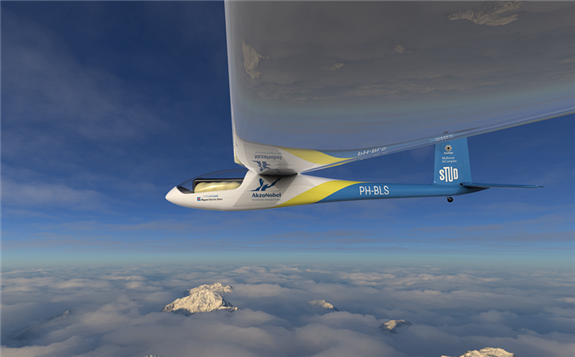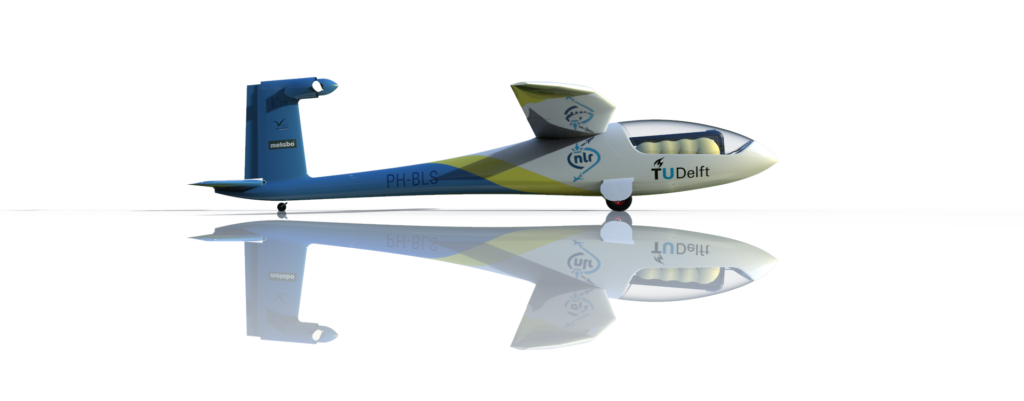AeroDelft, a student team at the Technical University of Delft, is designing the first manned aircraft powered by liquid hydrogen and fuel cells. On April 24th, the team revealed a prototype of the aircraft, which does not emit any harmful greenhouse gases and only releases water vapour.

In the past 120 years, aviation has progressed from a few pioneers dreaming of flight to an industry capable of carrying over 4 billion passengers to their destinations annually. This expansion has resulted in the aviation industry being responsible for 2% of global CO2 emissions, with the burning of fossil fuels as its main cause. Aviation has, therefore, played a large part in climate change, caused by greenhouse gases such as CO2. Hydrogen propulsion in aircraft is still in its infancy, but the students hope that their aircraft will boost sustainable development in the industry.
Liquid Hydrogen
“The efficiency and quietness of the hydrogen cells are excellent. Because of these advantages, more transportation companies are choosing hydrogen.“– Guillaume Faury, CEO of Airbus

The students are designing a propulsion system for the “Phoenix”, the name of the prospective aircraft, which uses the energy stored in hydrogen to power the aircraft. The decision to use hydrogen is logical: hydrogen is the lightest element and holds three times as much energy per kilogram than kerosene. The CEO of Airbus, Guillaume Faury, said recently in an interview: “The efficiency and quietness of the hydrogen cells is excellent. Because of these advantages, more transportation companies are choosing hydrogen. There are already buses and cars driving around powered by hydrogen“. Using hydrogen as a fuel in the transportation industry does not seem unreasonable.
The students decided to store hydrogen in liquid form since this takes up less space and can, therefore, be stored more efficiently than gaseous hydrogen. The main challenge faced by the team in Delft is how to keep the liquid hydrogen at a cool -253°C. The fuel tank has been designed with a 20 cm thick insulation to achieve this. During operation, the hydrogen is mixed with oxygen from the atmosphere in the fuel cell, producing electrical power and steam.
Inspiration
The use of hydrogen comes with its own set of challenges. The high energy content of hydrogen makes it a fairly volatile fuel. To meet the stringent safety requirements set by the aviation industry and guarantee the safety of the occupants, the team has designed a safety system which allows the hydrogen to be vented from the aircraft in the case of an emergency. An onboard battery is also charged during flight which allows the pilots to continue flying for a certain time and land safely.
Another challenge is the sustainable production of hydrogen. With current methods, far too much energy is required to produce liquid hydrogen at a large scale. With the presentation of the aircraft design the AeroDelft team hopes to show the possibilities and potential of hydrogen as a fuel and thereby agree with the dean of the Faculty of Aerospace Engineering at Delft University of Technology, who recently said: “The aerospace industry is faced with an important challenge: the short-term evolution of aviation towards sustainable flying. This evolution demands engineers that think out of the box and collaborate with the belief and mindset that we can change the world. This mindset is what drives the students of AeroDelft to develop this aircraft”. By showing the world that it is possible to safely fly a liquid hydrogen-powered aeroplane the team hopes to inspire companies to invest in hydrogen and improve the effectiveness of its production.
“The aerospace industry is faced with an important challenge: the short-term evolution of aviation towards sustainable flying.”– Henri Werij, Dean of Aerospace Engineering TU Delft
14 million holes
The engineers at AeroDelft have calculated that the final, manned aircraft will be able to fly from Delft to Morocco on a single tank of liquid hydrogen. To make this possible the airplane needs to fly as efficiently as possible. A factor that contributes greatly to the efficiency of the aircraft is the revolutionary ‘boundary layer suction’ system. This system consists of 14 million holes with a diameter of 0.1 mm in the wings, which ‘suck’ away the thin layer of air on top of the wings and results in a reduction of fuel consumption by up to 15%.
Test flight
The team, consisting of 35 students with 23 different nationalities, will test a scaled model of the plane on the 7th of September 2019, and then go on to test the full-scale aircraft at Rotterdam The Hague International Airport in 2021.